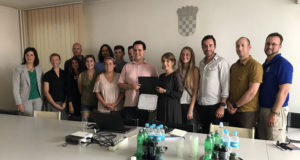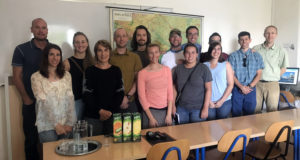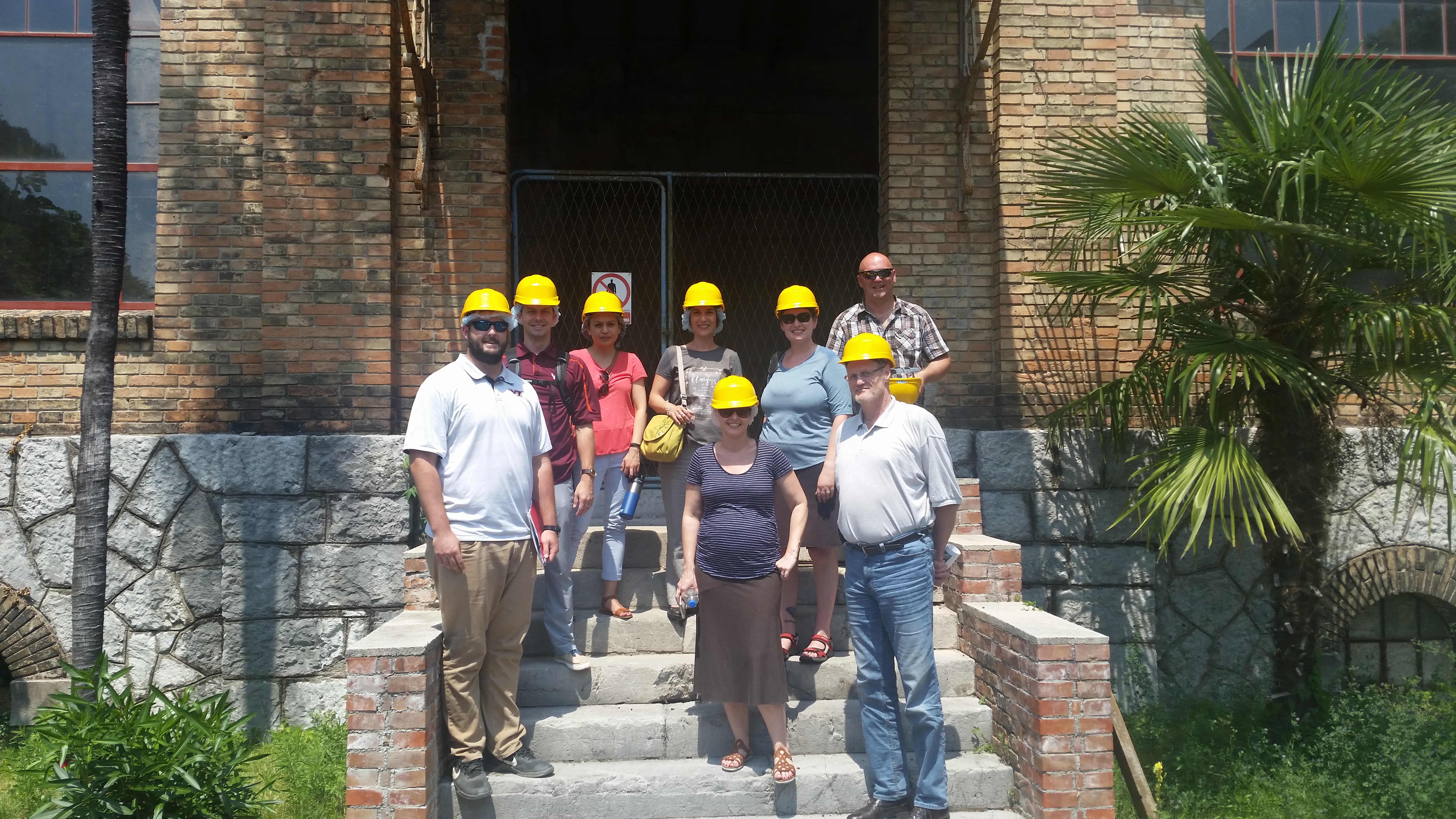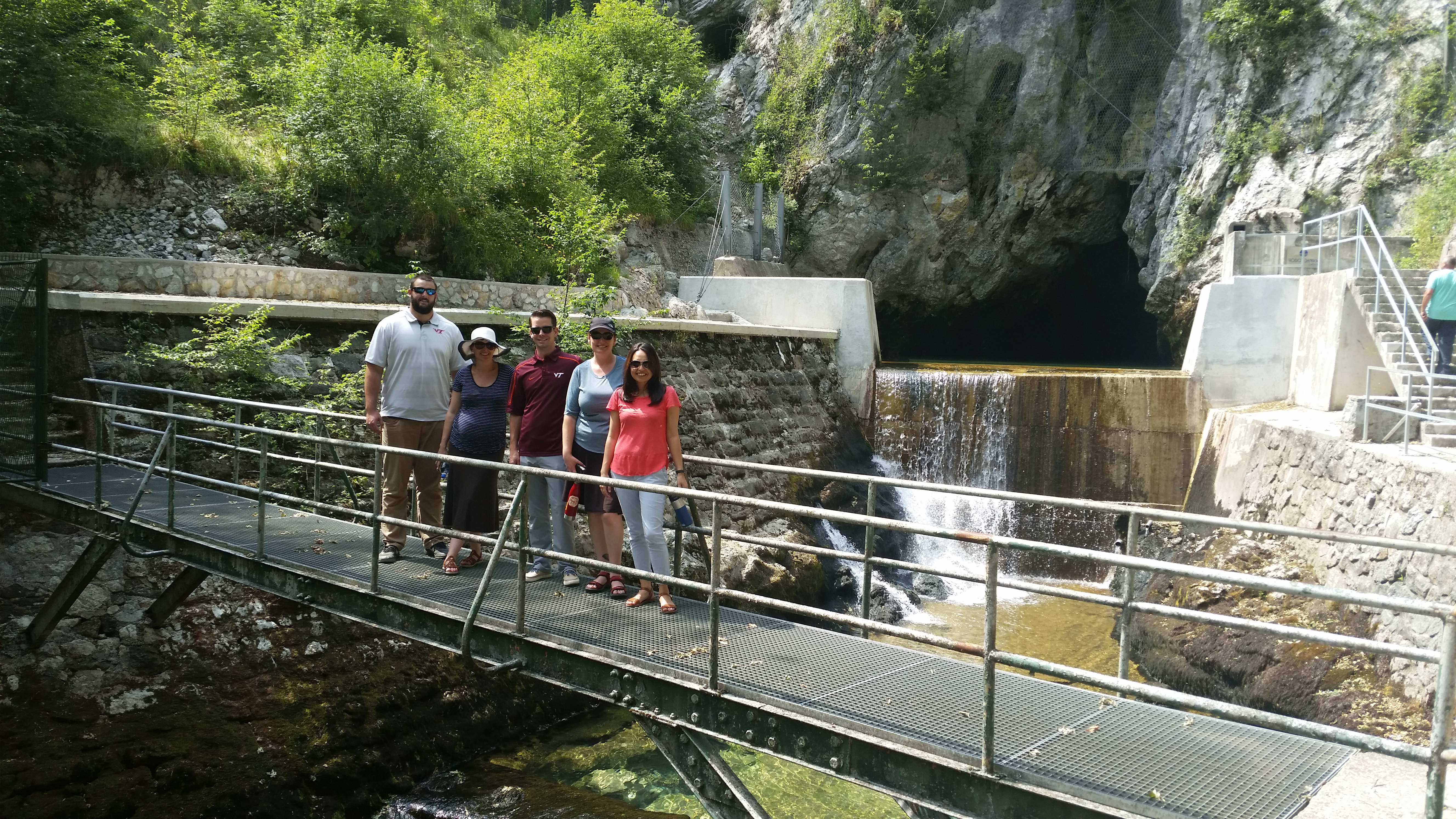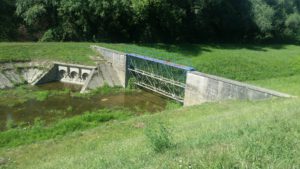GEOG 2104 Introduction to Environmental Security
With accelerated ecosystem degradation and climate change pressures, many geographic locations are experiencing worsening of existing and the emergence of new environmental security challenges. Many of these issues directly or indirectly impact different types of security by, for example, intensifying human forced displacement and migration, causing food and water scarcity, and contributing to social and geopolitical instability. This course describes foundational concepts, issues, and terminology related to environmental security. It also broadens understanding of emerging issues at the nexus of environmental and climate change and security risks, including homeland, human, national, energy, food, and water security. The course modules present various case studies of environmental security risks focused on climate-driven conflicts and sociopolitical instability, internal and international displacement and migration, and policy and programmatic solutions. This course also discusses datasets, methods, and decision-support tools that can inform environmental security research and policy-making, such as strategy analysis, scenario development, and simulations.
GEOG 2114: Introduction to Coastal Regions
With accelerated ecosystem degradation and climate change pressures, many geographic locations are experiencing worsening of existing and the emergence of new environmental security challenges. Many of these issues directly or indirectly impact different types of security by, for example, intensifying human forced displacement and migration, causing food and water scarcity, and contributing to social and geopolitical instability. This course describes foundational concepts, issues, and terminology related to environmental security. It also broadens understanding of emerging issues at the nexus of environmental and climate change and security risks, including homeland, human, national, energy, food, and water security. The course modules present various case studies of environmental security risks focused on climate-driven conflicts and sociopolitical instability, internal and international displacement and migration, and policy and programmatic solutions. This course also discusses datasets, methods, and decision-support tools that can inform environmental security research and policy-making, such as strategy analysis, scenario development, and simulations.
More than half of the global human population lives along the coasts, often in densely populated urban metropolitan areas. Coasts are epicenters of economic activity, innovation, trade, cultural and historical significance, and societal progress. At the same time, the coastal zone is rapidly evolving, experiencing more frequent and severe flooding, persistent sea level rise, environmental degradation, development pressures, and population growth. This course introduces students to different processes and systems that shape physical and human characteristics of coastal regions. The course comprehensively addresses different dimensions that make coastal zone distinctive from other settings, such as geomorphology, natural and human systems, built environment, economic significance, and policy. It also highlights emerging challenges in coastal areas such as sea level rise, recurrent flooding, environmental degradation, population growth, and urbanization. Lastly, the course concludes with discussions on the future of the coasts and the adaptation and resilience strategies that will help sustain their functions.
GEOG 4414/5414: Climate Change and Societal Impacts
This class focuses on the multidimensional climate change impacts and adaptation options, and more importantly on their causes and consequences, interaction, complexity, uncertainty, and possible outcomes for different societies. It explores dynamic trends of climate change-induced population movement, conflicts, socioeconomic shifts, geopolitics, and equity issues, as well as their impact on vulnerability, resilience, and adaptive capacity of different societies using contemporary digital tools and methodologies.
Fall 2017 Applied Component: Participation in the Resilience Research & Design Tidewater Laboratory (Tidewater Collaboratory) in partnership with the City of Hampton, Wetlands Watch, Virginia Sea Grant, and United States Green Building Council, Hampton Roads (for more info, please see Events and Partnerships).
NR 5114: Global Issues in Natural Resources & Croatia International Field Experience
This graduate course, offered by the Center for Leadership in Global Sustainability, is designed to “build competencies in sustainability professionals to think globally about sustainability challenges and their career, to situate their own professional work in global context, to better understand sustainability situations and tools for examining them, and to practice team/collaborative project management and problem solving skills”.
Summer 2018 Theme: Hydrological systems in Croatia: challenges and opportunities for the sustainable management of water resources, June 25-July 05, 2018
The 2018 IFE Programmatic Activities focused on the emerging water management issues in the continental and coastal areas of Croatia, as well as on the regional water management challenges that are affecting the sustainable use of water resources. Namely, students had an opportunity to learn about following themes from our local partners (Department of Geography at the University of Zagreb; the Ministry for Environmental Protection and Energy; the City of Rovinj; the Center for Marine Research at the Institute Rudjer Boskovic; the Public Fire Department of the City of Karlovac; and Program Sava d.o.o.):
- Hydrological systems and water management issues in Croatia (rivers, aquifers, and marine)
- Main stressors that affect water quality (urbanization, industry, transportation, tourism, etc.)
- Climate change and its impacts on water quality and quantity
- Drinking water quality and emerging water use trends in different regions
- Flood risk and flood control measures – historical approaches and current strategies
- Local, state, and EU efforts and policies to support sustainable water management
In addition to these overarching issues, students learned about three different local water management issues via case studies in different geographic areas of Croatia:
1) Implementation of flood control measures to address more frequent and intense revering flooding in the City of Karlovac: https://hydrologicalsystemsincroatia.wordpress.com/case-study-karlovac/
2) Construction of small hydropower dams at 10 locations on the river Sava to address flood risk, sediment loss, production of renewable energy, and urban development: https://hydrologicalsystemsincroatia.wordpress.com/case-study-river-sava/
3) Impacts of tourism on water availability and quality, as well as on the existing water and sewage infrastructure in the coastal town of Rovinj in Istria region: https://hydrologicalsystemsincroatia.wordpress.com/case-study-istra-region/
This summer, students were tasked with development of WordPress site to document their 2018 IFE experiences and provide a case study analysis: https://hydrologicalsystemsincroatia.wordpress.com/.
Summer 2017 Theme: Sustainable utilization of the River Sava for hydro power production in Croatia, June 20-29, 2017
Related authored product: Transboundary resources negotiation game: the River Sava & hydropower (used by XMNR 2017 class)
This natural resources negotiation simulation revolves around the construction of multiple hydroelectric dams on the River Sava’s upper portion flowing through Croatia. The Sava is located in the basin that stretches over multiple countries, Slovenia, Croatia, Bosnia and Herzegovina, Serbia, Montenegro, and Albania. The river Sava is 926 kilometers long with a catchment area of over 97,800 square kilometers, representing the largest Danube tributary. The lower and middle sections of the river are still relatively pristine and maintain their natural state with limited human interventions on its banks. Although many parts of the river retain their physical and ecological integrity, urbanization pressures, investment in intensive farming, demand for more recreation space, and the construction of flood control features around the urban areas drive the need for more river management. The game scenario revolves around the proposed project, the Zagreb on Sava, initiated by the Croatian national energy company (HEP group) that invigorated long-standing plans to construct eight hydroelectric dams on the upper portion of the River Sava in the vicinity of the Croatian capital Zagreb.
The main catalysts of now revived effort to move forward with this project include the number of emerging challenges that are increasingly affecting the river such as the risk of flooding, lowering of the water table, and sediment transport, as well as the availability of EU funds available to support the project implementation. In addition, the emergence of new technology that is less impactful on the ecosystem brought more appeal and support for the project than the traditional concrete dams known to considerably change the hydrological and environmental conditions. The project Zagreb on Sava is not yet realized, but gained a momentum after Croatia joined the EU in 2012 and had to meet the agreed renewable energy targets. For Croatia, the most feasible way to meet these goals is via hydropower considering that Croatia is a “water-rich” country.
This game is designed to facilitate the negotiation process between stakeholders in Croatia, International partners with stake in the River Sava Basin, and neighboring governments that are members of the International River Sava Commission. Slovenia already has eight hydroelectric power plants along the river Sava and extensively utilizes its floodplain for recreation and tourism, therefore being the most advanced in its management and having the most extensive human imprint on this resource. In part, this can be explained by the fact that Slovenia has been a part of the EU longer than other stakeholders and was virtually unaffected by the military conflict in the early 90s. In Croatia and other countries downstream, the River Sava is mostly underutilized. However, all those countries are developing plans to explore the river for hydropower, navigation, and tourism, as well as improved flood control and transportation infrastructure for better spatial connectivity, and urbanization.
UAP 3354 Environmental Policy and Planning
This course introduces students to the field of environmental policy and planning by reviewing a broad spectrum of environmental policies, programs, and planning approaches commenced on the community, regional, state, and federal levels. Following the initial presentation of the key terminology, concepts, practice, and theory of environmental policy and planning, the course proceeds to critically evaluate a range of environmental problems and address strengths and weaknesses of existing policy and planning strategies developed in their response. This learning approach provides students with the ability to apply creative and multidimensional judgment when discussing possible policy and planning solutions for existing and emerging issues in the environment, as well as understand the complexity and uncertainty of corresponding decision-making efforts. Throughout this process, students have opportunity to actively participate in the class discussions, problem-solving activities, and group collaboration.
UAP 4364: EPP Senior Seminar
This course includes a critical examination of the social, political, economic, legal, scientific, and technological contexts underlying processes of environmental change, problems, and solutions, as seen from various conceptual and disciplinary perspectives. It offers students with opportunity to investigate and discuss emerging issues and approaches in environmental policy and planning. Namely, it explores the following topics: planning for climate change adaptation and community resilience; international innovations in environmental planning and policy; and U.S. energy planning and policy from federal to state to regional to local.
*** Spring 2014 Theme: Coastal Policy & Planning
The Environmental Policy Seminar is designed to facilitate learning and critical thinking about emerging environmental issues and their policy and planning solutions. The first three lectures will introduce you to the field of climate change policy and planning and more specifically concepts of adaptation, vulnerability, and resilience. The goal of this seminar course is not to cover a diverse range of issues superficially but rather to focus on a single emerging problem and analyze it in a great depth, exploring its various dimensions, complexity, uncertainty, and impacts on coastal policy and planning decision-making.
The overarching theme of this seminar is Coastal Policy and Planning. Many coastal communities are increasingly being exposed to coastal hazards and sea-level rise. The augmented risks are already evident from the increase in tropical cyclone activity, manifested as more intense and extensive hurricanes, chronic coastal problems like erosion, land subsidence, as well as gradual but permanent sea-level rise. The inherent vulnerability of coastal systems partially stems from the long history of unsustainable land use, zoning, and development that have been fostering high population densities and urban growth close to shorelines.
In this class, we will explore the extent of this problem, current adaptation efforts and policy and planning interventions designed to increase coastal resilience, as well as social, economic, political, legal, and other implications that might influence coastal decision-making. We will analyze this issue and implemented/considered solutions on different geographic and temporal scales, as well as discuss individual case studies to evaluate to identify good practices and identify gaps and needs in coastal environmental policy and planning.
And then, after the fantastic semester, we celebrated in the Hokie House…
UAP 4384: Pollution Control Policy and Planning
This course will introduce you to the planning and policy aspects of managing residuals and environmental contaminants and their effects on human health and environmental quality in the United States. It will present technical and economic factors involved in management of water quality, air quality, solid and hazardous wastes, toxic substances, and noise pollution. It will give you a theoretical and practical foundation to critically evaluate the management of diverse range of environmental issues, as well as address strengths and weaknesses of existing local, state, and federal policy and planning strategies developed in their response. This learning approach will equip you with the ability to apply creative and multidimensional judgment when discussing policy and planning solutions for existing and emerging issues in the environment. Throughout this process, you will have an opportunity to actively participate in the class discussions, problem-solving activities, and group collaboration.



